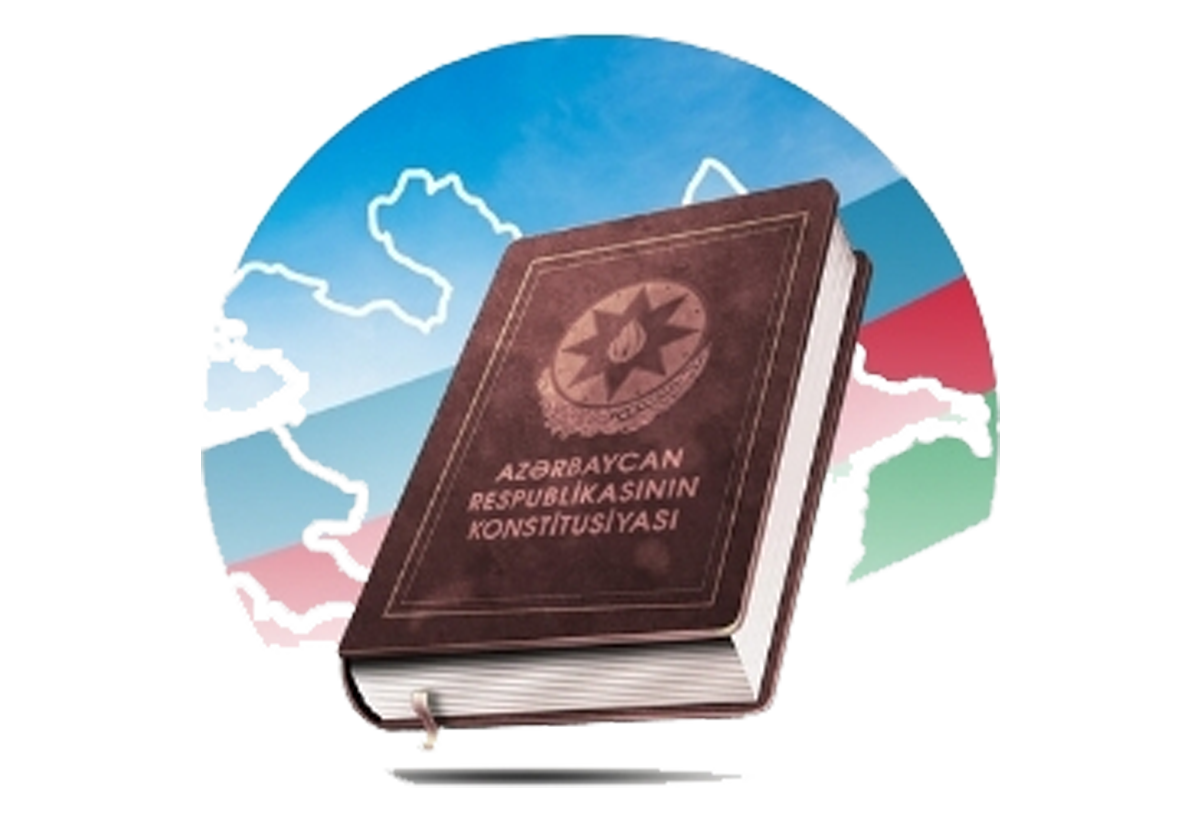THE STRUGGLE OF THE AZERBAIJAN DEMOCRATIC REPUBLIC AGAINST ARMENIAN CHAUVINISM
The main directions of the foreign policy of the Azerbaijan Democratic Republic, which gained independence in a very tense and complex international situation, were to achieve recognition of the young state in the international world and to establish relations with neighboring states. The first step of Azerbaijani diplomacy was to inform leading foreign countries about the declaration of sovereignty of the republic.
One of the next steps of the Azerbaijani government was the signing of the peace and friendship agreement with the Ottoman state on June 4, 1918. This agreement had a positive impact on the international reputation of the Republic of Azerbaijan, it was a necessary step to preserve its territorial integrity and the physical existence of the people.
One of the most difficult tasks facing the Azerbaijani government was to establish normal neighborly relations with Armenia. Despite Azerbaijan's serious compromise, our ungrateful neighbor did not give up its territorial claims. Armenia's territorial claims prevented the peaceful settlement of border disputes between the two neighboring states. Armenia, which had contradictions in the region, claimed hegemony in the South Caucasus.
In 1918-1920, relations between the Republic of Azerbaijan and Bolshevik Russia were tense. Azerbaijan's economic interests demanded normal relations with Bolshevik Russia. In March 1919, the new Cabinet of Ministers, headed by N. Yusifbeylin, once again considered it necessary to establish mutual relations with Bolshevik Russia on the basis of equality and independence. However, Bolshevik Russia, which did not give up its "great state" position, refused to recognize the new states created on the territory of the former empire.
On October 30, 1918, Turkey, which was defeated in the First World War, had to withdraw its army from the territory of Azerbaijan due to the terms of the Mudros Treaty, which were also very difficult for Azerbaijan. The commander of the allied armies, General Thomson, gave an ultimatum to the Turkish command to leave Baku within a week and the entire South Caucasus within a month.
On November 17, British troops led by General Thomson entered Baku. After getting acquainted with the situation in Baku for a few days, he said that the British command has great respect for the Azerbaijani government.
In accordance with the changed conditions, the resumption of the activities of the National Council of Azerbaijan and the start of the parliament proved the flexibility of the state of Azerbaijan and the ability to get out of a difficult situation. General Thomson announced that he recognized the new government formed on December 26, 1918 two days later.
The Armenian and Russian national councils and other reactionary forces operating in Baku tried to overthrow the Azerbaijan Democratic Republic by speaking under the slogan "united and indivisible Russia". For this purpose, they created the "Caucasus-Caspian" state in January 1919, headed by L.Bicherakhov. On February 28, 1919, the government of Azerbaijan issued a note to the command of the allied states. The note demanded the withdrawal of Bicherakhov's troops from the city and the disarmament of Armenian military units. The British command defended the demands of the Azerbaijani government. Bicherakhov's detachment was removed from Baku within a day, the Armenian units were disarmed and released.
One of the most important issues of the Azerbaijani government was to achieve recognition of the republic in the international world. On December 28, 1918, the government approved the composition of the delegation that will participate in the Paris peace conference. The chairman of the delegation was A.M. Topchubashov, the members were M. Hajinsky, A. Agayev, A. Sheykhulislamov, J. Hajibeyli, M. Mehdiyev, M. Maharramov. The delegation was empowered to represent the republic at the Paris peace conference, to achieve de facto recognition of the Republic of Azerbaijan, and to protect Azerbaijan's national interests and sovereignty. The issue of Azerbaijan was discussed for the first time on May 2 at the meeting of the heads of state of England, USA, France and Italy. US President Vidro Wilson spoke against the admission of the Azerbaijani delegation to the Paris peace conference. On May 28, the delegation was received by V. Wilson. During the meeting, the memorandum of the Republic of Azerbaijan was presented to V. Wilson. During the negotiations, it was said that sending a special representative of the United States to the South Caucasus for knowing the local conditions was considered appropriate.
The Armenian government wanted to achieve its territorial claims to Azerbaijan through the United States. However, V. Laskel, who was familiar with the situation on the ground, stated that Karabakh and Zangezur belong to Azerbaijan in the negotiations he conducted in Baku on August 29. He suggested the creation of a neutral zone in Nakhchivan, Sharur and Darelaez, managed by the US governor-general. On October 24, V. Laskel's statement was announced on the establishment of the US governor general in Nakhchivan and the appointment of American colonel E. Delli as governor. However, the decisive position of the Azerbaijani government and the serious resistance of the people of Nakhchivan thwarted the plans of the Americans. Colonel Delli acted as a representative of the peace conference in Nakhchivan.
The victories of Kolchak's and Denikin's armies in the summer of 1919 accelerated the recognition of the Omsk government by the allied states. On June 12, the Supreme Council of the Entente countries issued a note on the recognition of the Omsk government and providing it with comprehensive assistance. Azerbaijan, Georgia and the North Caucasus republics sent a note of protest to the peace conference.
The defeat of Kolchak's and Denikin's armies by Bolshevik Russia in the autumn of 1919 changed the international situation. The Prime Minister of Great Britain, Lloyd Core, stated that it is possible to recognize the independence of Azerbaijan and Georgia during his speech in the British Parliament on November 12. He repeated this idea at the Paris peace conference. Finally, on January 11, 1920, at the suggestion of Lord Curzon, the Minister of Foreign Affairs of Great Britain, the Supreme Council of the Entente declared the de facto recognition of the independence of the Azerbaijan Democratic Republic.
After the collapse of the South Caucasian Seym, the need to define the borders of the newly created states emerged. From the first days of its existence, the Armenian state tried to encroach on Azerbaijan and occupy the ancient lands of Azerbaijan. In the summer of 1918, Andronik, the cruel enemy of the Turkish people, attacked Zangezur with a military force of 8,000 people. He demanded the population of Zangezur to submit to the Armenian government or to vacate Zangezur. The armed forces separated from other regions of Azerbaijan also rejected this proposal.
Andronik's band of robbers destroyed and burned Azerbaijani villages and brutally killed civilians. At the end of 1918, the Dashnaks destroyed 115 Azerbaijani villages in Zangezur, 21 in Javanshir, Shusha districts, and more than 60 in Iravan governorate. More than 100 thousand Azerbaijanis were expelled from their homeland.
The government of Azerbaijan took urgent measures to prevent the robberies committed by Andronik's gangs in Zangezur and Karabakh. At the meeting of the government on January 15, 1919, it was decided to establish the post of Karabakh governor general within the boundaries of Zangezur, Shusha, Javanshir and Jabrayil districts. Khosrov bey Sultanov, who was appointed as the general-governor, arrived in Shusha city on February 12 and began his duties.
Andronikos captured the city of Gorus and made three attempts to capture the city of Shusha, which the Armenians called the capital of "Little Armenia". Azerbaijan's self-defense forces defeated Andronik's bandits in Zabukh district. He was forced to retreat to Gorus with heavy losses. On February 23, 1919, Andronik again moved with a large group from Gorus in the direction of Digh and tried to capture all of Zangezur, but Khosrov bey Sultanov's decisive position and measures forced him to leave the territory of Azerbaijan again.
In June 1919, an armed conflict took place in Shusha as a result of sedition of the Armenian National Council. Kh.Sultanov managed to get the members of the Armenian National Council to leave Azerbaijan. The government of Azerbaijan prevented bloodshed in Karabakh.
The lands of Nakhchivan were also included in the plans of Armenian nationalists "Great Armenia from sea to sea". In May-August 1918, Andronik entered Nakhchivan with a gang of 8,000 people, shelled the villages under the name of "ethnic cleansing", and brutally killed the local population. On August 7, the Turkish army headed by K. Garabekir Pasha entered Nakhchivan. Thus, the independence of Andronikos groups in Nakhchivan was ended. The defeat of Turkey in the First World War forced the Turkish troops to leave Nakhchivan on November 1. The danger of the occupation of Nakhchivan region by Armenia resulted in the creation of Araz-Turk Republic by local Azerbaijanis.
The government of Azerbaijan took urgent measures to protect Nakhchivan.
On February 28, 1919, the Nakhchivan Governorate was established by the decision of the government. Bahram Khan Nakhchivanski was appointed to the post of Governor-General. The attempts of Armenians to acquire the lands of Nakhchivan intensified in the spring of 1919. With the consent of the British command, Armenian administration was established in the Nakhchivan region in May-July 1919. The people of Nakhchivan strongly protested this. On July 25, the people of Nakhchivan launched a strong attack, crushing the Armenian troops and forcing them to flee. "Armenian administration" in Nakhchivan region failed.
According to the agreement signed between Azerbaijan and Armenia in Tbilisi on November 23, 1919, the parties agreed to stop the armed conflict and resolve the disputed border issue peacefully. Armenia violated the terms of the agreement and sent troops to Zangezur lands again. Armenians destroyed more than 50 Azerbaijani villages and forced the population to flee. As a result of the joint efforts of the Azerbaijani army with local partisan groups, the plans of the Armenians to invade Karabakh were disrupted, and in February 1920, a short-term stability was established in Zangezur.
Armenian nationalists living with the dream of creating "Great Armenia from sea to sea" did not give up their territorial claims against Azerbaijan even at the Paris Peace conference. The Armenian representatives in Paris wanted to expand the territory of Armenia not only at the expense of 7 provinces of Turkey, but also Georgia and Azerbaijan. The territorial demands they submitted to the peace conference included Zangezur, part of Karabakh and Nakhchivan regions, which were ancient Azerbaijani lands.
Armenian representatives at the Paris peace conference tried to discredit the Republic of Azerbaijan by discrediting the bloody crimes they committed in Karabakh, Zangezur, and Nakhchivan region in the name of Azerbaijanis. Azerbaijani representatives in Paris raised the issue of establishing an international investigative commission to study the Armenian-Azerbaijani conflict. Armenians, who were afraid that their crimes would be revealed.Territorial claims, slander of Armenians against Azerbaijan were resolutely repelled by the Azerbaijani delegation at the Paris Peace conference.
Docent Elmar Khalilov
Vice-rector on Social affairs and public relations of Sumgayit State University



